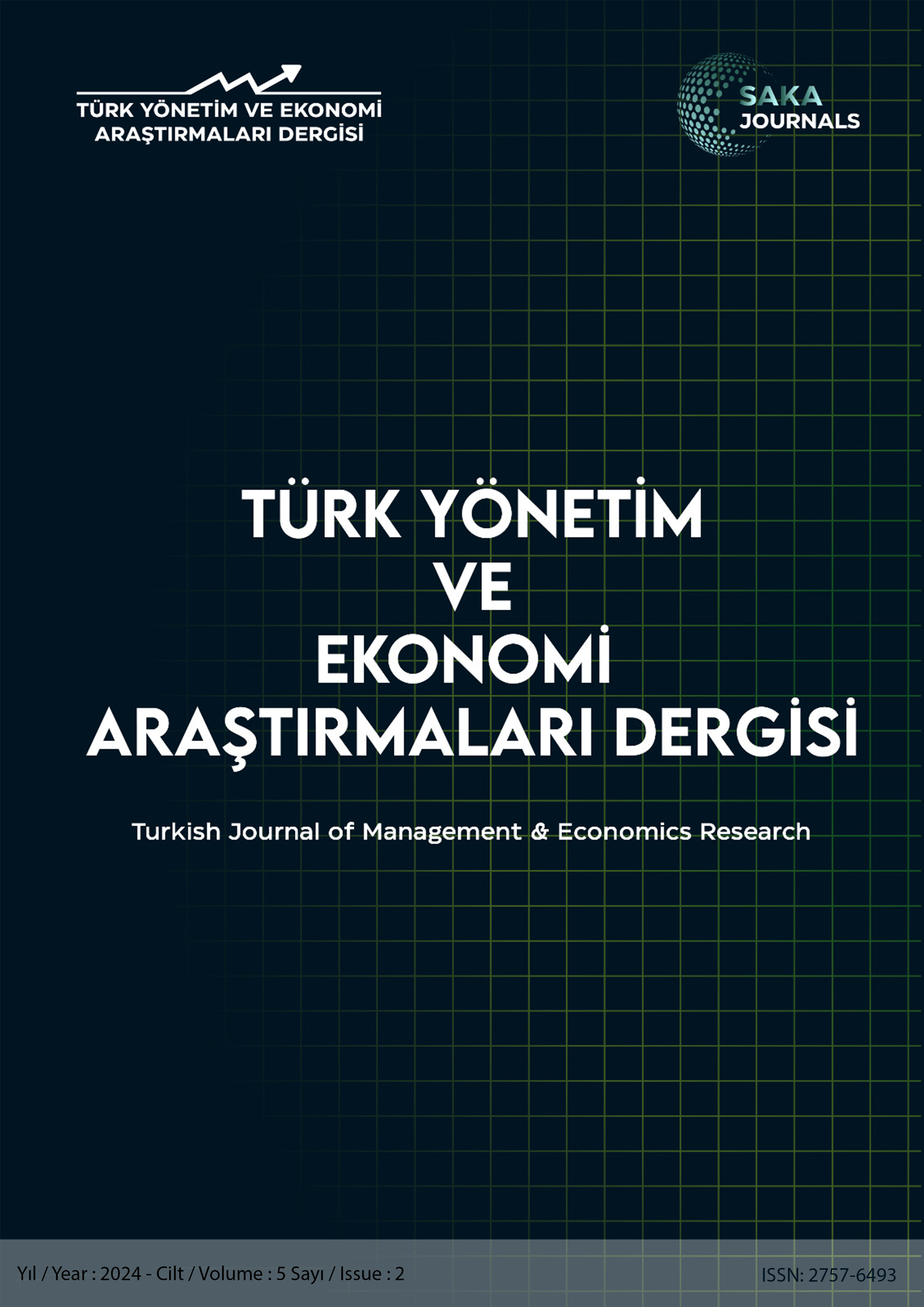Mongolia’s Development And Increasing Dependence On China
Keywords:
Mongolia,, Democratic Transition,, Dependence,, China,, SustainabilityAbstract
The collapse of the Soviet Union has led to economic hardship in Mongolia. Its national gross domestic product fell by about 1/3 and the economy entered a deep recession. However, this allowed Mongolia to democratize its political system and transform its socially planned economy into a market-based liberal economy. In the early 2000s, the economy of Mongolia recovered, and since then it has achieved rapid economic progress. Over the past 20 years, its GDP grew from about 2 billion US dollars in 2004 to over 19.87 billion US dollars at the end of 2023. At the same time, per capita income rose from 785 dollars to 5765 dollars. Mongolia has significantly reduced poverty, greatly improved the well-being of its citizens, and achieved upper middle-income country status. Despite significant achievements, Mongolia has limitations as it is surrounded by giant neighbors and highly dependent on them in terms of security, trade, and economy. While the influence of Russia is declining, Mongolia still highly depends on fuels and electricity from Moscow. In contrast to Moscow, Beijing’s influence in Mongolia is rising rapidly and steadily. China accounts for over half of the Mongolian overall trade and more than 91% of its exports. The increasing dependence of Mongolia is making its progress vulnerable to external shocks.
Downloads
References
Amarsaikhan, S (2024), “Russian Bank could open its branch in Mongolia and invest in our Banking sector”, https://mongolia.gogo.mn/r/mo4ve (Erişim Tarihi: 30.09.2024).
Batbayar, Uurtsaikh & Bingöl, Yılmaz (2022), “The Concerning Democratic Consolidation in Mongolia”, Asya Araştırmaları Uluslararası Sosyal Bilimler Dergisi, S.6 (1), ss. 1-16.
Bayasakh, Kh. J (2000), “Mongolia and Russia-China on the Eve of the New Millennium”, China Report, 36 (1), pp. 73-81.
Bilskie, Julia S. and Arnold, Hugh M (2002), “An Examination of the Political and Economic Transition of Mongolia Since the Collapse of the Soviet Union”, Journal of Third World Studies, 19(2), pp. 205-218.
Bondaz, Antoine (2014), “Mongolia: China’s perfect neighbor?”, China Analysis, (2014), pp. 7 - 10.
Borodyna, Olena, Mami, Elvira and Nijhar, Ilayda (2023), Mongolia: Towards sustainable economic recovery. ODI Emerging Analysis, London.
Cheng, Kevin C (2003), “Growth and Recovery in Mongolia During Transition”, IMF Working Paper. WP/03(217), 1-27.
ChinaFile (2017), “China Says Hopes Mongolia Learned Lesson after Dalai Lama Visit”. https://www.chinafile.com/links/china-says-hopes-mongolia-learned-lesson-after-dalai-lama-visit (Erişim Tarihi: January 24, 2017).
Communistcrimes.org (2024), “Communist Dictatorship in Mongolia (1921-1990)”. https://communistcrimes.org/en/countries/mongolia (Erişim Tarihi: 01.09.2024).
Data World Bank (2024), “Mongolia”. https://data.worldbank.org/indicator, (Erişim Tarihi: 10.10.2024).
Department of Foreign Affairs and Trade (2024), “Mongolia country brief”. https://www.dfat.gov.au/geo/mongolia/mongolia-country-brief (Erişim Tarihi: 01.11.2024).
Eskenazi, Andy (2020), “Between a Rock and a Hard Place: Mongolia’s Economic Dependence on China with a Focus on the Mining Industry”, The Journal of Contemporary Asian Studies, July (2020), pp. 1- 13.
Grieger, Gisela (2024), EU-Mongolia relations: Possible critical raw materials partnership. European Parliamentary Research Service.
Hookham, M (1980), “How Mongolia is Really Ruled: A Political History of the Mongolian People's Republic, 1900–1978. By Robert Rupen. Stanford: Hoover Institution Press. 1979.225 pp”, International Affairs, 56(4), pp. 753–754.
International Monetary Fund (2024), Political and Economic History. International Monetary Fund.
Lkhaajav, Bolor and Maire, Antoine (2021), “The fall of the Soviet Union: Mongolia's path to democratic revolution”, https://thediplomat.com/2021/12/the-fall-of-the-soviet-union-mongolias-path-to-democratic-revolution/ (Erişim Tarihi: 30 Ara 2021).
Macrotrends (2024a), “Ulaanbaatar, Mongolia Metro Area Population 1950-2024”, https://www.macrotrends.net/global-metrics/cities/21882/ulaanbaatar/population (Erişim Tarihi: 05. 11. 2024).
Macrotrends (2024b), “Mongolia Exports 1981-2024”, https://www.macrotrends.net/global-metrics/countries/MNG/mongolia/exports (Erişim Tarihi: 06. 11. 2024).
Marshall, Richard (2004), “Lessons from Mongolia’s Transition to the Market”, The UNDP Transition Conference, Hanoi, Viet Nam, (June 1st, 2004), pp. 1-33.
Military Review (2022), “The Mongolian Gambit - How the Great Mongolia Project Failed”, https://en.topwar.ru/201323-mongolskij-gambit-kak-ne-sostojalsja-proekt-velikaja-mongolija.html (Erişim Tarihi: 07.09.2022).
Ministry of Commerce of the People's Republic of China (2024), “2024年1-9月中蒙双边贸易额同比增长 8.8%”, https://mn.mofcom.gov.cn/zmhz/art/2024/art_8e48c5db34974cabbac2c1627491209b.html (Erişim Tarihi: 17.10.2024).
Ministry of Economy and Development (2023), Investor Guidebook Mongolia. Ministry of Economy and Development. Ulaanbaatar.
Mongolianembassy.us (2024), “Economic outlook of Mongolia”, https://mongolianembassy.us/about-mongolia/trade-and-economy/ (Erişim Tarihi: 20.10. 2024).
Mongolian-ways (2024), “A brief Mongolian history”. https://www.mongolian-ways.com/travel-guide/mongolian-history (Erişim Tarihi: 30.10.2024).
Namjilsangarav, Ganbat (2016), “Mongolia says Dalai Lama will not be allowed future visits”. https://apnews.com/general-news-8c026337a97640309f4bdb530bf6cd07 (Erişim Tarihi: December 21, 2016).
National Statistics Office of Mongolia (2024), “Population of Mongolia”, https://en.nso.mn/home (Erişim Tarihi: 10. 10. 2024).
Radchenko, Sergey (2008), “New Documents on Mongolia and the Cold War”, Cold War International History Project Bulletin, 16 (Fall 2007/Winter 2008), pp. 341-446.
Radchenko, Sergey (2012), “Carving up the Steppes: Borders, Territory, and Nationalism in Mongolia, 1943—1949”, Eurasia Border Review, 3(Summer), pp. 9—31.
Russian News Agency (2024), “Trade turnover between Russia, Mongolia over $1.4 bln in 7M- 2024 — official” .https://tass.com/economy/1837115 (Erişim Tarihi: 2 Sep 2024).
Shang Wubu (2023), 对外投资合作国别(地区)指南: 蒙古国.商 务 部 国 际 贸 易 经 济 合 作 研 究 院/ Ministry of Commerce International Trade and Economic Cooperation Research Institute.
Thomas E. Ewing (1980), “Russia, China, and the Origins of the Mongolian People's Republic, 1911-1921: A Reappraisal”, The Slavonic and East European Review, 58(3), pp. 399-421.
Tuerdi, Maimaitiaili (2014), “Çin Dış Ticaretinin Türkiye Ekonomisine Etkisi”. III. Türkiye Lisansüstü Çalışmaları Kongresi, 15-18 Mayıs 2014, Sakarya. (3), ss. 141-152.
Tumurjav, Buyanlham (2005), “Mongols and Nationalism”, Research institute in the Chiyoda, 34 (12), pp. 267-279.
Wallenböck, Ute (2024), “Navigating the Triangular Dynamics: Mongol-Russian Relations in the Context of China”. https://ceias.eu/navigating-the-triangular-dynamic/ (Erişim Tarihi: Feb 27, 2024).
World Bank (2024), “The World Bank in Mongolia”. https://www.worldbank.org/en/country/mongolia/overview (Erişim Tarihi: 29. 10. 2024).


